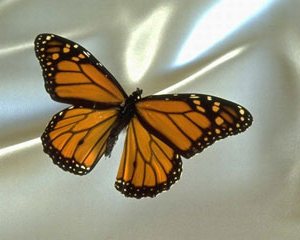‘Evolution in action’ or ‘Evolution inaction’?

The last New Scientist for 2006 summarized the main scientific issues and achievements for the year gone (with a bit of left-wing politics and environmental activism thrown in).
‘Evolution in action’ proclaimed the headline of one article.1 The author started by admitting that it was difficult to observe evolution happening, and then said, ‘This year, though, evolutionary biologists were treated to not one but several glimpses of evolution in action right before their eyes.’ What were these exciting observations of evolution in action?
- The Anolis lizards. The introduction of a large predatory lizard onto the Caribbean islands where a little lizard (Anolis sagrei) lived saw the small lizards quickly develop longer legs, which helped them flee the predators. But then the Anolis lizards learned to climb amongst the branches of shrubs to escape and, within six months, they had changed to shorter legs, which suited climbing in the shrubs. We reported on this recently. Note that these changes over time (a rather lame definition of evolution commonly used in the debating trick known as equivocation), are even within a species. Creationist biologists recognize such changes, and the role of natural selection in weeding out those creatures with shorter or longer legs, as the situation might demand. These sorts of changes give no support to the idea that lizards could change into birds, or anything fundamentally different. Humans come with short and long legs, and one could imagine situations where one would be more adapted than the other, but I doubt that anyone would say that we were evolving (changing) into some different creature. Such changes have limits and generate no new complex genetic information necessary to generate new features such as feathers, or unique proteins, for example. Furthermore, that the changes occurred so quickly in the Anolis lizards strongly suggests that natural selection is merely working on the existing genetic variety present in the lizards; not even mutations are involved, although mutations bring the wrong type of change to make evolution believable anyway.
- ‘…two butterfly species that arose abruptly from hybridisation (crossing) between existing species, a form of instant speciation formerly known only in plants.’ This probably refers to the Heliconius butterfly (the details are not given). We discussed this also: The Heliconius hybrid butterfly: speciation yes, evolution no. However, assuming it was the Heliconius work, the New Scientist author seems to have got it mixed up a bit. Two Heliconius species were hybridized and produced a third, which was thought to be extinct. So, the biologists speculated (reasonably), that the two had arisen from the one that had disappeared. However, even if the author had it right about hybridizing creating two new ‘species’, hybridizing of species does not create new DNA code that did not already exist; it just adds it together. We discussed this in reference to the cabbage family of plants in Creation 26(3), June 2006. It’s like arguing that joining two books into one book (an anthology) creates new information. Once again, creationist biologists have no problem with these observations, but they give no support to the grand evolutionary notion that all organisms had a universal common ancestor—that we were once worms.2
- ‘Biologists also witnessed evolutionary misfires, where new species in the act of diverging from a parent species failed to retain their distinct identity and merged back again through hybridisation.’ The writer cites ‘new species…that merged back again due to hybridisation.’ Once again the details are missing. Somehow this is portrayed as evidence for evolution! This reminds me of the use of punctuated equilibrium to immunize evolutionary theory from the fossil evidence that organisms have not gradually evolved into distinctly different kinds of organisms. In the end, if evidence of gradual change were found, it would be claimed as evidence for gradual change (classical neo-Darwinism), but if such evidence is absent, then it is evidence for evolution by jumps / jerks (punctuated equilibrium—semi-technical). In other words, no matter what the evidence, it becomes ‘evidence for evolution’!
As the famous philosopher of science, Karl Popper, said, ‘I have come to the conclusion that Darwinism is not a testable scientific theory…’.

Speciation = evolution?
The over-arching premise of this piece in New Scientist is that speciation = evolution, so anything to do with speciation is evidence for evolution. However, creationist biologists accept that speciation occurs (see Speciation Q&A), which creates sub-types within created kinds (baramins). This happens through the sub-sampling of the created genetic information present at Creation. Some degenerative changes are contributed by mutations in today’s fallen world—changes involving loss of information (see Mutations Q&A). However, to change a microbe into a mango or a musician would need masses of new genetic information for the additional complex, integrated biological systems (irreducible complexity)—the blood-clotting cascade or the immune system in humans for example. Biochemist Michael Behe has pointed out that many components are needed at the right place and the right time to make a blood clotting system work. If even one is missing, the animal is either a hemophiliac, or else suffers blood clots in vital vessels. Either way, it’s dead. Things such as the blood clotting system cannot arise by natural processes—this and almost countless other systems demand an intelligent creator.
References and notes
- Holmes, B., Evolution in action, New Scientist 192(2583/2584):23-30, December 2006. Return to text.
- Conway Morris, S., Once we were worms, New Scientist 179(2406):34ff, August 2003 Return to text.

Readers’ comments
Comments are automatically closed 14 days after publication.